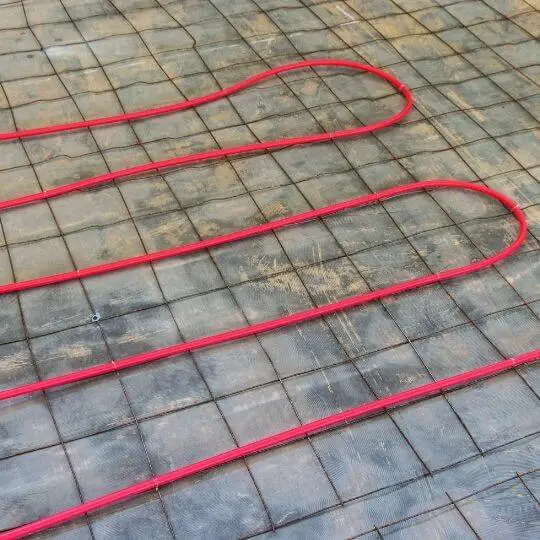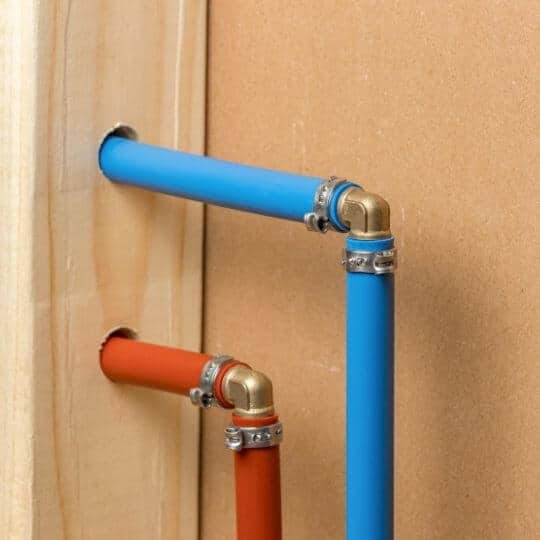How long does pex last?
Work on your home should provide you with comfort, safety and provide everything that will bring water to your faucet, take wastewater to the sewer or provide fresh air circulation in all rooms of your home.
That is why it is important to thoroughly and thoroughly research all the details about the type of material you will install behind the walls and under the floor of the room. We have found several reasons why we prefer PEX pipes over traditional materials, such as copper.
PEX Durability

An additional motive for more detailed research of what suits you the most is the fact that worn materials and bad pipe joints inside the walls can cause serious headaches or lead to new costs that raise the ceiling of the masonry or renovation of your house.
First of all, the duration of copper pipes cannot have one answer because there are at least three types of pipes that are installed in installations:
- The M type lasts about 20 years
- L type can last up to 100 years, and the reason is that they are slightly thicker than M – type and more expensive in terms of the materials from which they are made
- K-type pipes are the most durable, they can last longer than 100 years. They are the thickest, large profiles, extremely high-quality materials. They are used for lines in the city water supply system and in industrial plants, which is why they are expensive and are not intended for installation in residential homes.
- They rarely crack and can withstand high water pressure, which is why they are installed in more serious water supply systems.
On the other hand, the duration of PEX pipes depends on several conditions [1]:
- The intensity of use,
- Water quality and
- The temperature of the water passing through these pipes.
All these reasons can lead to a lifespan of PEX pipes of 45, even 50 years. Regardless of all that, PEX pipes have a 25-year warranty, primarily due to their composition and elasticity.
The mission of this portal is to offer answers to all questions that may arise during construction planning and help you make the best choice when it comes to installation material in your home.
Want to Pour Your Pipes into Concrete? No Problem!
PEX pipes are a great choice because of the flexibility of the material, as well as the possibility of expansion and contraction. The joints can expand up to eight times, and at higher temperatures, they can stretch up to 15”.
By operating a heat gun, the joints are easily matched and assembled within a few seconds, the moment the pipe begins to cool. Professionals in practice mention that these pipes are convenient for burying below the surface of the earth, below the freezing level.
They are placed in cement dust, which means that they can also be poured with concrete. This is only the case when it comes to pipes, because cuttings – especially if they are made of coppers, cannot be concreted.
How long does PEX last in concrete?

When the pipes are installed correctly by professionals, we can think of a maximum length, up to almost 50 years. This is because placing the pipe below the surface of the earth reduces the influence of the sun’s rays and UV radiation, and prevents additional damage and solid pipes that are subject to cracking.
In addition, it should be reminded that the materials in PEX pipes are flexible and elastic, which is why they can expand, which makes them resistant to freezing and cracking underground.
Influence of Building Materials on Health
When it comes to the impact of pipe materials, you have 2 options. Copper and plastic pipes.
- Copper and plastic pipes can release certain components while they are being used. Plastic pipes that release components into the water when used are not recommended or recommended for use.
- The disadvantage of both types of materials is that there is a possibility of releasing chemicals from the pipe into the water, which thus acquires a “plastic” taste. However, this taste may disappear after a few months of use.
- This risk [2] existed in pipes installed before 1977. In addition to the guaranteed shelf life of the pipes in ideal conditions, you can consider a slightly earlier replacement of air lines if the pipes are older than 1977.
- The technology of making and installing pipes has advanced so much that today there is no risk of this type.
If you bought a house whose year of construction may be earlier than the year of your birth, you do not have the “luxury” of planning a water supply, sewerage, or air lines system. However, you can meet the problem and make smart informed decisions about the installation in the renovation process.
All this can significantly extend the life of your new home and enjoy it, without any problems.
Modern technologies that plan, make, and install installations in your house have made the job easier when it comes to water supply and drainage systems. So what about older drainage systems before 1994?
It is possible to bridge them with dams [3], devices that will enable faster water flow or provide a better supply of fresh air in your air lines.
How to Protect Pipes in your Household?

As we wrote earlier in this text, the duration of PEX pipes depends on several factors: the length of pipes without joints, the temperature of the water or air passing through them, but also exposure to sunlight or UV rays.
The average life of PEX pipes in ideal conditions can reach about 40, even 50 years, but you can also use Uponor PEX lifespan by choosing the option that is resistant to UV rays. [4]
If you use the optimal temperature, store pipes during the winter so that water is not retained and does not freeze at low temperatures, it all leads to having installations that last a long time and do their job well.
So, How to Prevent Pipe Freezing?
In preparation for work on your household, one of the most difficult projects is to choose quality materials that are durable for a longer period, can meet your needs, and are available and affordable when it comes to price.
Is PEX better than copper for freezing?
Of course, it is, you could already read that in earlier posts on our site. In addition to being soft and easy to work with, copper [5] can be useful in plumbing work.
It certainly is, since it has elasticities in the composition of the pipe. Although copper is more useful on assemblies because of the softness of the material that plumbers are used to working with, experience shows that PEX pipes are more durable when it comes to low temperatures.
For How Long Does PEX Last in Concrete?
When the pipes are installed correctly by professionals, we can think of a maximum length, up to almost 50 years. This is because placing the pipe below the surface of the ground reduces the influence of the sun’s rays and UV radiation, and prevents additional damage and rigid pipes that are subject to cracking.
In addition, it should be reminded that the materials in PEX pipes are flexible and elastic, which is why they can expand, which makes them resistant to freezing and cracking underground.
Instead of a Conclusion, our RecommeOptimalndations
PEX pipes are easier to install than those metal, rigid pipes that were used in the previous period. Also, due to their elasticity, PEX pipes [6] can be bent and used in slightly longer rows, which is why there is less need for joints.
PEX pipes have justified their duration in the past 30 years and have shown that we cannot doubt them as in the problems caused by metal pipes: corrosion, electrolysis, limescale inside the pipes.
Copper can be a good choice when it comes to duration, according to the experience of professionals, it is easy to work on joints, although it cannot be a great choice for specific situations. Therefore, our recommendation is to consult a professional plumber to work with copper to choose the best solution for your installations.
You can think about the exact criteria before choosing improvements for your home. For example, you can combine in the part of the house that allows flexible pipes, to work with “hard-to-reach” places.
On the other hand, in some places, only a thin copper tube comes. In addition, a large role in the planning and implementation of the installation of installation systems plays their price.

Michael Davis is a heating & plumbing expert who currently works as independent contractor in SC. He also writes for Plumbertip.
For almost 10 years he worked on various plumbing tasks across South Carolina.


